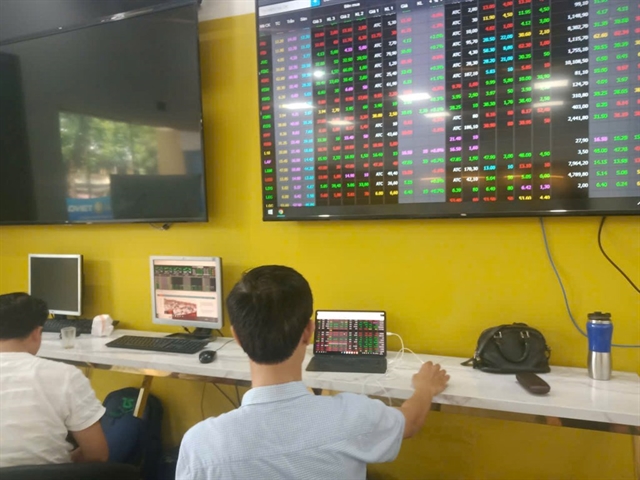Selling pressure surged on Friday, causing the VN-Index to fall below the critical support level of 1,600 points.

HÀ NỘI — The stock market closed the first trading week of November with notable fluctuations as selling pressure surged on Friday, causing the VN-Index to fall below the critical support level of 1,600 points.
This marks the fourth consecutive week of decline, totalling a drop of near 200 points from its peak of 1,794.58 points reached on October 14.
Last week, the VN-Index on the Hochiminh Stock Exchange (HoSE) declined by 40.55 points, or 2.47 per cent, to close at 1,599.1 points. Meanwhile, the HNX-Index on the Hanoi Stock Exchange (HNX) wrapped up the week at 260.11 points, down 5.74 points, or 2.16 per cent, compared to the previous week.
The substantial drop in the VN-Index places the Vietnamese stock market among the ten worst-performing markets globally over the past week.
Liquidity continued to weaken, with the total trading value for the week reaching nearly VNĐ126.4 trillion (US$4.8 billion), down 8.15 per cent from the prior week.
The trading session on November 6 recorded the lowest liquidity in five months, with trading volumes plummeting by 45.6 per cent compared to the average of the past 20 sessions.
Foreign investors maintained a net selling position but with less intensity. After consecutive weeks of heavy selling, foreign trading activity showed signs of cooling.
They sold over 93.2 million shares last week, amounting to more than VNĐ2.5 trillion, which represents a 45.8 per cent decrease in volume and a 17.2 per cent decrease in value compared to the previous week.
Experts expect that short-term market adjustments may continue as investors seek a balance point.
According to Đinh Việt Bách, an analyst at Pinetree Securities, selling pressure is likely to stem from major stocks, particularly in the banking sector, Vingroup and some components of the VN30-Index.
However, mid-cap stocks are beginning to show more positive signals and may even establish a short-term bottom.
Experts from Pinetree predict that the market may experience further volatility this week to shake out weaker positions, potentially activating capital waiting on the sidelines. A crucial requirement for this recovery is the return of buyer interest, which could lead to a technical rebound.
Conversely, if investor caution persists, selling pressure could extend to even the stronger stocks, pushing the index further down to the 1,500–1,520 point range.
Investors holding high positions are advised to use any technical rebounds at the beginning of the week to restructure and mitigate risks in their portfolios.
For those maintaining reasonable allocations, this period could present opportunities to observe and identify new entry points as the market stabilises.
The 1,600–1,620 point range is now the near-term resistance level. Analysts at Saigon-Hanoi Securities (SHS) expect a short-term balance to settle around 1,550 points.
In the base scenario, the VN-Index is likely to oscillate and accumulate between 1,550 and 1,600 points if liquidity does not improve.
Should the buying interest return and the index consolidate steadily around 1,600, there may be a chance to retest the 1,630–1,660 range. Conversely, if the index breaks below 1,550 with increased liquidity, this would signal a need to reduce positions and manage risks more tightly.
Internationally, attention this week will focus on the prolonged government shutdown in the US. Delayed economic data releases will redirect investor focus toward private sector data and comments from Federal Reserve officials regarding policy direction for December.
Domestically, the Vietnam Securities Depository reported the addition of 311,000 new investor accounts in October, bringing the total number of new accounts opened in the first ten months of the year to nearly 2.1 million.
With this positive data, SHS analysts believe that despite price corrections, the medium-term demand, supported by new investors who continue to accumulate, will serve as a cushion for the recovery phase when liquidity conditions and market sentiment improve. — BIZHUB/VNS





